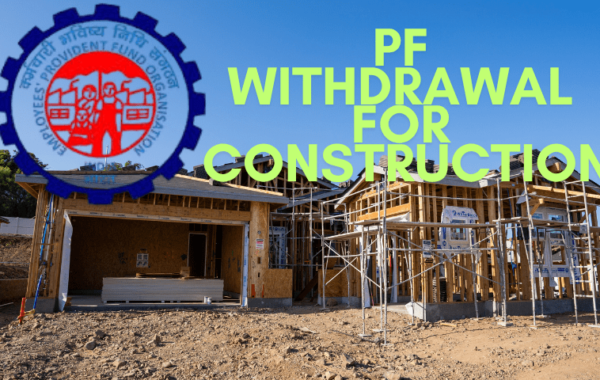
Building with Purpose: Architecture for Special Needs Communities
Our communities must be designed to cater to the needs of everyone in a world that strives for inclusiveness and equality. This includes individuals with special needs who often face unique challenges in their daily lives. Thoughtful architecture and community planning ensure their well-being and integration. Let’s explore the importance of designing spaces with a purpose, focusing on a welcoming environment for special needs communities by using special needs communities architecture.
Understanding Special Needs Communities Architecture
It is crucial to know who we are talking about before delving into the architecture of particular communities.Firstly, Special needs encompass a wide range of conditions and disabilities. Secondly, These include physical disabilities, sensory impairments (like blindness or deafness), cognitive disabilities, and developmental disorders. Finally, People with special needs require tailored support and environments that make their daily lives easier.
Inclusive Design: A Key Principle
In architecture and community planning, the concept of inclusive design is central. Ultimately, Inclusive design is sometimes known as universal design. It focuses on creating spaces and environments accessible to and usable by as many people as possible. This is regardless of their abilities. Therefore,this approach aims to eliminate physical and social barriers and make life more comfortable and convenient for everyone.
Architects consider various aspects of inclusive design when designing spaces for special needs communities:
Physical Accessibility
This includes wheelchair ramps, wider doorways, and grab bars in bathrooms. This helps to ensure that people with mobility challenges can move around freely and independently.
Sensory Inclusivity
To accommodate individuals with sensory impairments, architects may incorporate certain features. They are like tactile flooring or sign language interpreters in public spaces. They also consider the acoustics of a room to help those with hearing impairments.
Cognitive Accessibility
We design spaces with simple, straightforward wayfinding systems, well-organized spaces, and easy-to-understand signage. This helps people with cognitive disabilities navigate the environment with confidence.
Flexibility
Another critical element of inclusive design is creating adaptable spaces. Spaces should be easily modified to meet the changing needs of residents or visitors. For instance, areas can be reconfigured to accommodate different activities or equipment.
Community Centers for All
One of the most vital components of designing for special needs communities is the creation of community centers. Thus, these spaces serve as hubs for socialization, recreation, and also support services. Here are some key design considerations for community centers:
Community centers must be accessible to all individuals, regardless of their physical abilities. This includes ramps, elevators, and well-designed paths for wheelchairs.
Architects should minimize sensory overload. This is possible by using soothing color schemes and incorporating noise-dampening materials. This ensures that individuals with sensory sensitivities can comfortably use the space.
For individuals with sensory processing disorders, multi-sensory rooms can be a valuable addition. These rooms offer a range of sensory experiences. From soft lighting and tactile surfaces to calming sounds, they provide a safe and stimulating environment.
Special needs communities often include individuals needing a quiet space for rest or sensory regulation. Designing soft areas within community centers ensures that everyone’s
Housing Solutions
Beyond community centers, housing plays a critical role in the lives of special needs individuals. Here are some architectural considerations when designing housing for these communities:
Housing units should be designed with adaptability in mind. Features like adjustable counter heights, reinforced walls for assistive devices, and wide doorways are essential for ensuring that residents can age in place comfortably.
Encourage social interaction among residents by including common areas within housing complexes. These spaces promote a sense of community and reduce isolation.
Special needs housing should incorporate advanced safety features. They include fire alarms with flashing lights for those with hearing impairments and non-slip flooring to prevent accidents.
It’s essential to design special needs housing as an integral part of the broader community rather than isolating these residents. This helps foster social inclusion and break down barriers. They include fire alarms with flashing lights for those with learning impairments.
Education Facilities
For children and young adults with special needs, educational institutions are essential. The special needs communities architecture of these facilities plays a significant role in providing a supportive learning environment. Here’s what architects consider:
Accessibility
Schools and educational institutions should be fully accessible, with ramps, elevators, and sensory-friendly entrances. This ensures that all students can move around the facility with ease.
Specialized Classrooms
Designing classrooms that cater to the specific needs of students, such as sensory-friendly lighting and flexible seating arrangements, can significantly enhance the learning experience.
Inclusive Play areas
Playground design is crucial in educational facilities for special needs communities. Play areas should have inclusive playground equipment, ensuring that all children can participate in recreational activities.
Therapy Rooms
Many students in special needs communities require therapy services. Including therapy rooms within educational institutions makes these services more accessible and convenient.
The Role of Technology
In the modern world, technology is a powerful tool in designing spaces for special needs communities. Here’s how it can be harnessed:
Smart Homes
Integration of smart home technology into housing units, enabling residents to control lighting. This also contains temperature and security systems through accessible interfaces like voice commands or mobile apps.
Virtual Reality (VR) for Therapy
Usage of VR in therapy rooms is to create immersive, controlled environments for therapeutic interventions, such as exposure therapy for individuals with autism.
Community Engagement and Consultation
When designing spaces for special needs communities architecture, architects should actively participate in community consultation. Their knowledge and perceptions help create spaces that truly meet their needs. Involving the community in the design process ensures that the rooms are not just accessible but also comfortable and genuinely accommodating.
The Benefits of Purposeful Architecture
Beyond the people who are directly impacted, special needs communities can gain much from purposeful architecture. Communities become more hospitable and diverse when inclusive and accessible environments are designed. It encourages empathy, understanding, and community among all inhabitants. Consequently, this promotes social inclusion and dismantles the obstacles.
Moreover, accessible and inclusive design principles are not only applicable to special needs communities. It embraces the wider community. By implementing these Special needs communities architecture design concepts in public spaces, we create environments that are more comfortable and convenient. This is the essence of a genuinely inclusive society.
In pursuing a more inclusive world, purposeful architecture is crucial in ensuring no one is left behind. In creating intentional architecture, Cibi+Simeon Designs plays an important role. Being the best architectural firm, we care for our clients. We prioritize their demands and construct buildings to compensate for their shortcomings. Moreover, we are experts in designing spaces for special needs communities. Join us to make the world beautiful and accessible for all.


